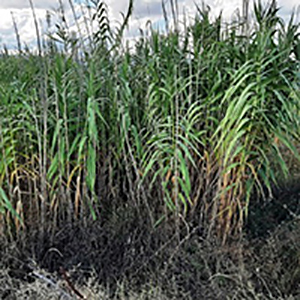Experimental analysis on concrete blocks reinforced with Arundo donax fibres

Published:27 December 2021
Abstract Views: 1682
PDF: 714
HTML: 34
HTML: 34
Publisher's note
All claims expressed in this article are solely those of the authors and do not necessarily represent those of their affiliated organizations, or those of the publisher, the editors and the reviewers. Any product that may be evaluated in this article or claim that may be made by its manufacturer is not guaranteed or endorsed by the publisher.
All claims expressed in this article are solely those of the authors and do not necessarily represent those of their affiliated organizations, or those of the publisher, the editors and the reviewers. Any product that may be evaluated in this article or claim that may be made by its manufacturer is not guaranteed or endorsed by the publisher.
Similar Articles
- Monica C. M. Parlato, Carlos Rivera-Gómez, Simona M. C. Porto, Reuse of livestock waste for the reinforcement of rammed-earth materials: investigation on mechanical performances , Journal of Agricultural Engineering: Vol. 54 No. 2 (2023)
- George Ashwehmbom Looh, Fangping Xie, Xiushan Wang, Augustine Ngiejungbwen Looh, Hamdaoui Hind, Grain kernel damage during threshing: a comprehensive review of theories and models , Journal of Agricultural Engineering: Vol. 56 No. 1 (2025)
- Zhi He, Xinting Ding, Wei Hao, Kai Li, Weixin Gong, Zixu Li, Yongjie Cui, Calibration and experiments of discrete element flexible model parameters for kiwifruit stalk , Journal of Agricultural Engineering: Vol. 55 No. 4 (2024)
- Najmun Nahar, Alex Otieno Owino, Sayful Kabir Khan, Zakaria Hossain, Noma Tamaki, Effects of controlled burn rice husk ash on geotechnical properties of the soil , Journal of Agricultural Engineering: Vol. 52 No. 4 (2021)
- Giuliano Vox, Evelia Schettini, Effects of agrochemicals, ultra violet stabilisers and solar radiation on the radiometric properties of greenhouse films , Journal of Agricultural Engineering: Vol. 44 No. 2 (2013)
- Yubing Sun, Yutong Zheng, Application of MOS gas sensors for detecting mechanical damage of tea plants , Journal of Agricultural Engineering: Vol. 55 No. 4 (2024)
- Monica Parlato, Simona M.C. Porto, Giovanni Cascone, Raw earth-based building materials: An investigation on mechanical properties of Floridia soil-based adobes , Journal of Agricultural Engineering: Vol. 52 No. 2 (2021)
- Silvana Fuina, Giuseppe C. Marano, Giuseppe Puglisi, Domenico De Tommasi, Giacomo Scarascia-Mugnozza, Thermo-mechanical response of rigid plastic laminates for greenhouse covering , Journal of Agricultural Engineering: Vol. 47 No. 3 (2016)
- Mario Pirastru, Marcello Niedda, Mirko Castellini, Effects of maquis clearing on the properties of the soil and on the near-surface hydrological processes in a semi-arid Mediterranean environment , Journal of Agricultural Engineering: Vol. 45 No. 4 (2014)
- Abdelkader Dehbi, Boulos Youssef, Abdel-Hamid I. Mourad, Corinne Chappey, Pietro Picuno, Dina Statuto, Physical and gas permeation properties of five-layer polyethylene film used as greenhouse roof , Journal of Agricultural Engineering: Vol. 49 No. 2 (2018)
You may also start an advanced similarity search for this article.

 https://doi.org/10.4081/jae.2021.1288
https://doi.org/10.4081/jae.2021.1288 











